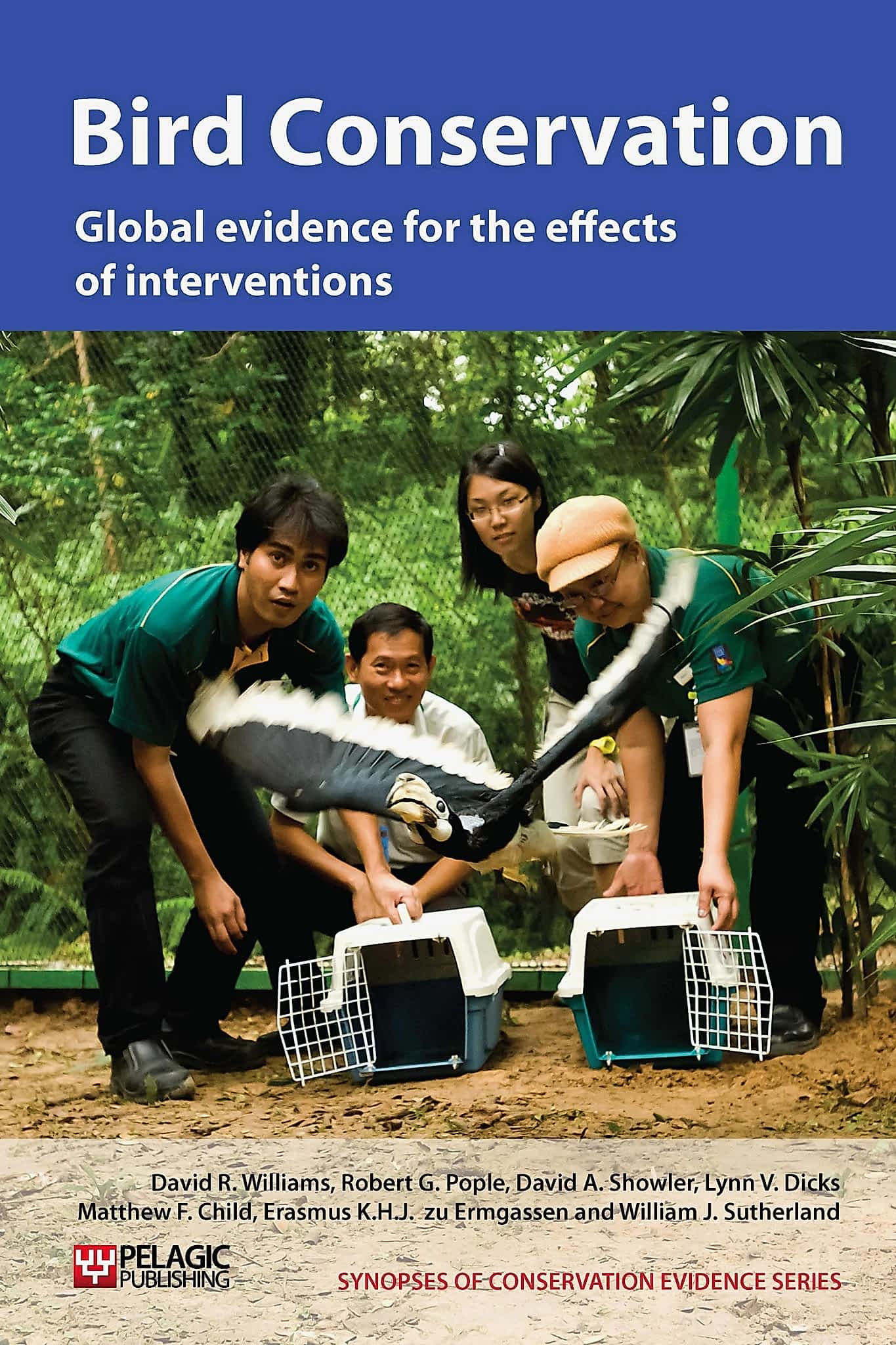Actions to conserve biodiversity
We have summarised evidence from the scientific literature about the effects of actions to conserve wildlife and ecosystems.
Review the evidence from the studies
Not sure what Actions are? Read a brief description.
454 Actions found
Refine
Hide
454 Actions found
Download Actions
Order results by:
| Action | Effectiveness | Studies | Category | |
|---|---|---|---|---|
Add perches to electricity pylons to reduce electrocution Action Link | Unlikely to be beneficial | 1 | ||
Add woody debris to forests Action Link | Unknown effectiveness (limited evidence) | 1 | ||
Alter artificial nest sites to discourage brood parasitism Action Link | Unknown effectiveness (limited evidence) | 1 | ||
Alter habitat to encourage birds to leave an area Action Link | Unknown effectiveness (limited evidence) | 1 | ||
Angle windows to reduce collisions by birds Action Link | Unknown effectiveness (limited evidence) | 1 | ||
Apply herbicide to mid- and understorey vegetation Action Link | Likely to be ineffective or harmful | 7 | ||
Artificially incubate and hand-rear bustards in captivity Action Link | Unknown effectiveness (limited evidence) | 2 | ||
Artificially incubate and hand-rear cranes in captivity Action Link | Unknown effectiveness (limited evidence) | 2 | ||
Artificially incubate and hand-rear gamebirds in captivity Action Link | Unknown effectiveness (limited evidence) | 1 | ||
Artificially incubate and hand-rear parrots in captivity Action Link | Unknown effectiveness (limited evidence) | 4 | ||
Artificially incubate and hand-rear penguins in captivity Action Link | Unknown effectiveness (limited evidence) | 2 | ||
Artificially incubate and hand-rear rails in captivity Action Link | Unknown effectiveness (limited evidence) | 1 | ||
Artificially incubate and hand-rear raptors in captivity Action Link | Likely to be beneficial | 10 | ||
Artificially incubate and hand-rear seabirds in captivity Action Link | Likely to be beneficial | 5 | ||
Artificially incubate and hand-rear songbirds in captivity Action Link | Likely to be beneficial | 4 | ||
Artificially incubate and hand-rear storks and ibises in captivity Action Link | Unknown effectiveness (limited evidence) | 2 | ||
Artificially incubate and hand-rear vultures in captivity Action Link | Unknown effectiveness (limited evidence) | 1 | ||
Artificially incubate and hand-rear waders in captivity Action Link | Likely to be beneficial | 4 | ||
Artificially incubate and hand-rear wildfowl in captivity Action Link | Unknown effectiveness (limited evidence) | 3 | ||
Artificially incubate eggs or warm nests Action Link | Unknown effectiveness (limited evidence) | 2 | ||
Bury or isolate power lines to reduce incidental bird mortality Action Link | Likely to be beneficial | 1 | ||
Can captive breeding have deleterious effects on individual fitness? Action Link | Evidence not assessed | 3 | ||
Can nest protection increase nest abandonment? Action Link | Evidence not assessed | 4 | ||
Can nest protection increase predation of adults and chicks? Action Link | Evidence not assessed | 5 | ||
Can supplementary feeding increase predation or parasitism? Action Link | Awaiting assessment | 3 |
Download Actions

Bird Conservation - Published 2013
Bird Synopsis
Watch this search
If you are familiar with RSS feeds, please click the button below to retrieve the feed URL:
RSS feed for this searchIf you are unfamiliar with RSS feeds, we would suggest reading this BBC article.
Unfortunately, due to the number of feeds we have available, we cannot provide e-mail updates. However, you could use tools such as Feed My Inbox to do this for you.
What are 'Individual studies' and 'Actions'?
Individual studies
An individual study is a summary of a specific scientific study, usually taken from a scientific journal, but also from other resources such as reports. It tells you the background context, the action(s) taken and their consequences.
If you want more detail please look at the original reference.
Actions
Each action page focuses on a particular action you could take to benefit wildlife or ecosystems.
It contains brief (150-200 word) descriptions of relevant studies (context, action(s) taken and their consequences) and one or more key messages.
Key messages show the extent and main conclusions of the available evidence. Using links within key messages, you can look at the paragraphs describing each study to get more detail. Each paragraph allows you to assess the quality of the evidence and how relevant it is to your situation.
Where we found no evidence, we have been unable to assess whether or not an intervention is effective or has any harmful impacts.




















